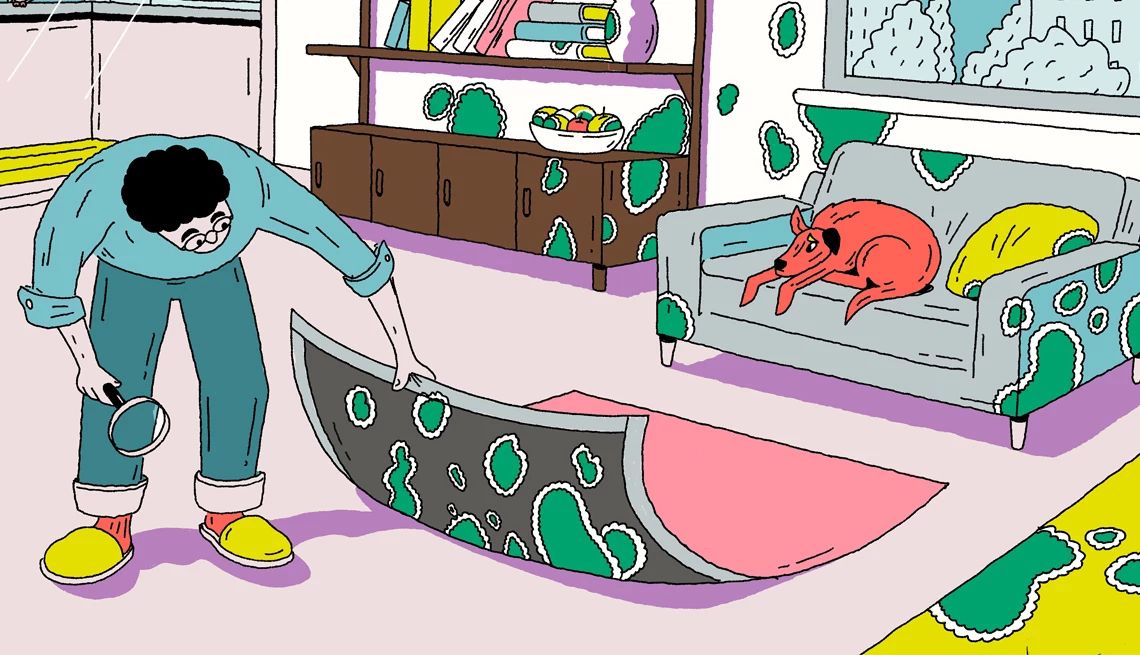AARP Hearing Center


Outdoor mold plays a crucial role in nature by breaking down dead organic matter. But indoors, it can be a nuisance or even a danger to your health.
How worried should you be? That depends, says forensic scientist and certified mold inspector Joshua Leviton; the answer is complex since mold can affect each person differently.
Here are unexpected places in your house where mold might be hanging out, how dangerous it is to your health and what to do to get rid of it for good.
Hiding in the walls … or behind the wallpaper
Sound like something out of a horror movie? It kind of is. Mold remediator Tal Saar says growth in drywall is a huge issue.
“Ninety percent of the jobs that we do involve drywall,” says Saar, the founder of a New York-based mold remediation company. “That’s where the majority of the issue is because it’s porous. So once you have water damage with the drywall and the porous material, you’re going to get mold and it’s going to come by fast … within 24 to 48 hours, you can have a mold issue.”
According to Saar, water damage in drywall can lead to the growth of black mold. Even though you might not see mold growth when you have water damage, it’s crucial to address the problem quickly.
You’ll likely notice the water damage right away, Saar says. Unfortunately, there’s only one way to effectively address the issue — remove the drywall and fix whatever caused the damage. If you don’t address the source of the problem, the mold will just come back.
Mold can also grow behind wallpaper, Leviton says. An easy-to-spot sign is if the paper starts to peel, though that does not necessarily mean you have a mold problem, he adds. It might just be humidity messing with the glue.
Lurking inside HVAC systems
Heating, ventilation and air-conditioning systems, or HVAC for short, are another area of the home where mold can live.
You may suspect or know there’s mold in your HVAC system if you or a professional has identified a moisture problem in your home, you see mold near the intake to the system, you smell a musty odor coming from the system or a routine check led to the discovery of mold.
The U.S. Environmental Protection Agency (EPA) says, “Many sections of your heating and cooling system may not be accessible for a visible inspection, so ask the service provider to show you any mold they say exists.” Be aware that not everything that looks like mold is mold. Only experts can determine that, and a laboratory analysis may be required for final confirmation. “For about $50, some microbiology laboratories can tell you whether a sample sent to them on a clear strip of sticky household tape is mold or simply a substance that resembles it,” the EPA states.
The EPA says HVAC systems, along with drain or condensate pans, need to be “checked routinely” to prevent and address any mold growth. Filters for the HVAC system need to be “kept dry and changed frequently,” and equipment should be evaluated by a professional HVAC contractor if it is more than 10 years old or failing to keep your house comfortable.
According to Leviton, mold can grow in the vents or ducts, as well as on the HVAC coil, which, in his experience, is usually where a more dangerous type of mold grows.
If you suspect or see mold growth on or in the HVAC system, Leviton says it’s time for testing. The EPA advises that you refrain from running your HVAC system and consult its guide — “Should You Have the Air Ducts in Your Home Cleaned?” — before moving forward.
“My recommendation would be to first get it tested to find out what species are present, which will then determine whether you need an HVAC company or mold remediation company to do the removal,” Leviton says.



































































More From AARP
Costco Recalls More Than 45,000 Mattresses Over Mold Risk
Products may have been exposed to water during manufacturing4 Hidden Allergy Triggers
Everyday items may be to blame for your symptoms
Indoor Air Quality: What You Need to Know
Smoke and other impurities can pollute air in your home
Recommended for You